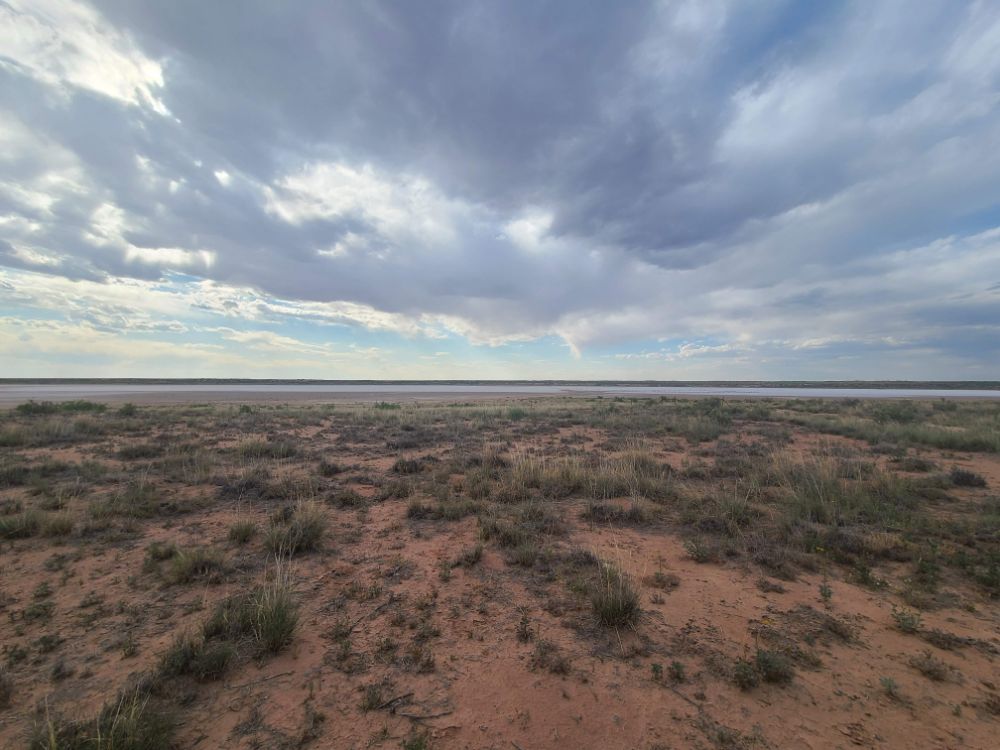Laguna Plata

Several generations of ancestral peoples lived at the Laguna Plata site between the early Archaic period and the Protohistoric period. They first used the site as a temporary hunting camp, but then established a more permanent seasonal base camp during the Formative period. When the weather was nice residents built pit houses into the ground and used them as places to gather and as shelter. They used their outdoor spaces to complete daily tasks like making tools, processing foods, or cooking over the fire. Ancestors living at Laguna Plata likely chose to live here during the warmer months, possibly traveling further south when the weather turned cold.
Who’s in the Neighborhood?
The ancestors living at Laguna Plata, especially during the Formative period, fostered relationships with communities outside of southeast New Mexico. They traded their own goods for pottery from the Mimbres Valley, northwest New Mexico, southwest New Mexico, and even northern Mexico. Residents may have had direct relationships with these far away groups, or they may have been part of a large trade network in which items are traded indirectly. Either way, people living at Laguna Plata were connected to their neighbors near and far.
What’s for Dinner?
Residents of the Laguna Plata site ate a variety of animals, plants, and vegetables. Nearby water sources attracted animals like rabbits, prairie dogs, deer and bison, making it convenient for ancestors living at the site to hunt. They hunted, processed, and ate all of these animals and more, but mainly relied on the smaller animals who would visit the site often and in large numbers. Members of this community also gathered, processed, and cooked plants like agave, cholla cactus, and cultivated gourd and maize. Not only were they gathering wild plants, but they were planting and gardening their own foods.
Tools of the Trade
Toolmakers and hunters left behind many stone tools and lithic debitage at the Laguna Plata site, including projectile points, hammerstones, ground stones, and flaked-stone tools. In the process of making tools, ancestors first found materials that would be strong and smooth, typically sourcing this material from a quarry near the site but sometimes trading for non-local rock like obsidian. Sometimes hunters would sit and carefully craft a knife or arrow point, but other times they would quickly shape a piece of rock into a sharp point to complete their task. Both types of tools are present at the Laguna Plata site. Residents also used manos and metates to grind up the plants that they would eat.
At the beginning of the Formative period this group began to make ceramics. Much like making stone tools, making jars and bowls involved sourcing materials from nearby the site. At the beginning, potters crafted plain wares and corrugated wares, but later they began decorating them with slip and paint. Potters at the Laguna Plata site created both types of ceramics, and they even traded with other communities for bowls decorated with designs from these areas.
Living on the Land
The Laguna Plata site sits on the Mescalero Plain, southeast of the Boot Hill and Burro Tanks sites, and northwest of the Merchant site. Residents of all four sites lived in the region at similar times, and as neighbors they likely crossed paths. As groups ventured away from the camp to hunt or trade, they may have met members of other communities. Like neighbors today, groups in the past may have had friendly or hostile relationships. Considering the closeness of their homes and similarities between these groups, it seems as though they were friendly towards one another.
Like Boot Hill and Burro Tanks, the ancestors who established Laguna Plata chose to build next to a plentiful water source. The Laguna Plata basin and several fresh water springs nearby provided a consistent source of water for the people, plants, and animals. Not only were residents able to find drinking water here, but the basin attracted animals and plant-life to grow nearby. Residents undoubtedly chose to settle and then expand this settlement based on its location near this sustaining water source.
